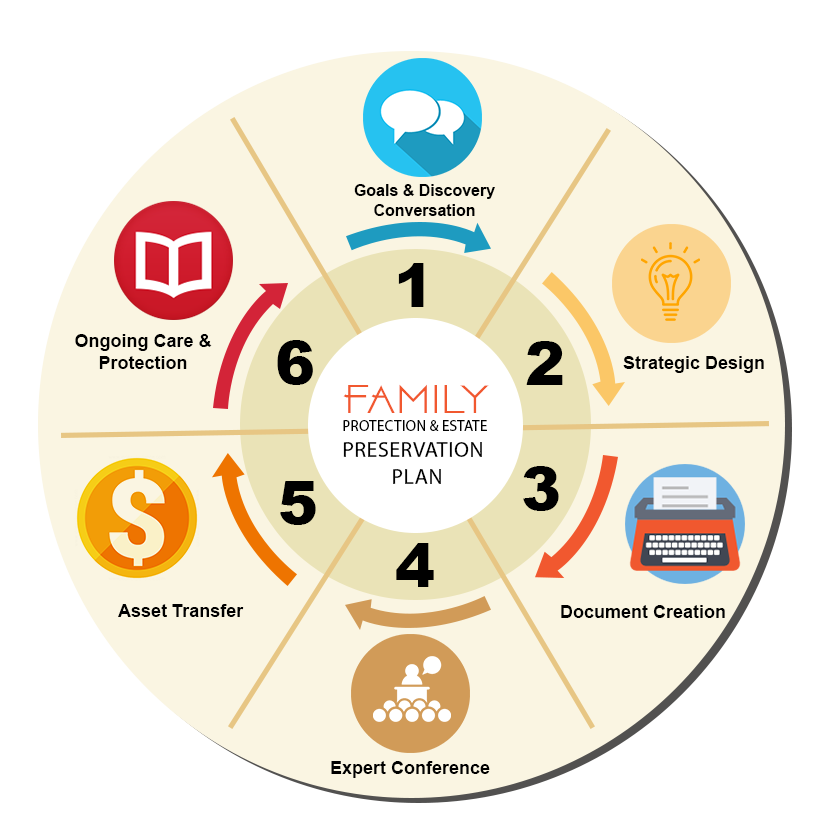In simplest terms, a Trust is a private document that allows a third party, called a Trustee, to control assets on behalf of another person, called a Beneficiary. Trusts can specify rules for how and when the assets are to be used.
Assets in a Trust may be be able to be passed outside of the Probate process, which generally save time and expense.
There are two major categories of trusts: A Revocable Trust, and an Irrevocable Trust.
A Revocable Trust allows you to retain control of your assets during your lifetime. You can alter it or dissolve it at any time during your lifetime. A Living Trust is a form of a Revocable Trust. Revocable Trusts may help you avoid Probate. They are still subject to Estate Taxes.
An Irrevocable Trust transfers assets out of your control. It can generally avoid Estate Taxes and the need for Probate. An Irrevocable Trust, as the name suggests, cannot be altered or dissolved after it is created.
Following are common examples of Trusts that may be part of a comprehensive estate plan:
Testamentary Trust: This Trust is created by the provisions of a Will, and goes into effect after your death. This is generally subject to Probate and to Estate Taxes.
Marital or “A” Trust: This Trust provides benefits to a surviving spouse, and is included in the taxable estate of the surviving spouse.
Bypass or “B” Trust: This Trust is often established along with a Marital Trust at the death of the first spouse. It is created to make full use of of the Federal Estate Tax Exemption for each spouse.
Irrevocable Life: This trust excludes life insurance proceeds from your taxable estate.
Qualified Terminable Interest Property Trust (QTIP): This trust provides income to a surviving spouse until their death, when the assets then go to additional beneficiaries. This can take advantage of the full Estate Tax exemption. It is often used in second marriages with children from a prior marriage.
Charitable Trust This trust provides certain assets to a charity, with the remainder going to other beneficiaries.













































